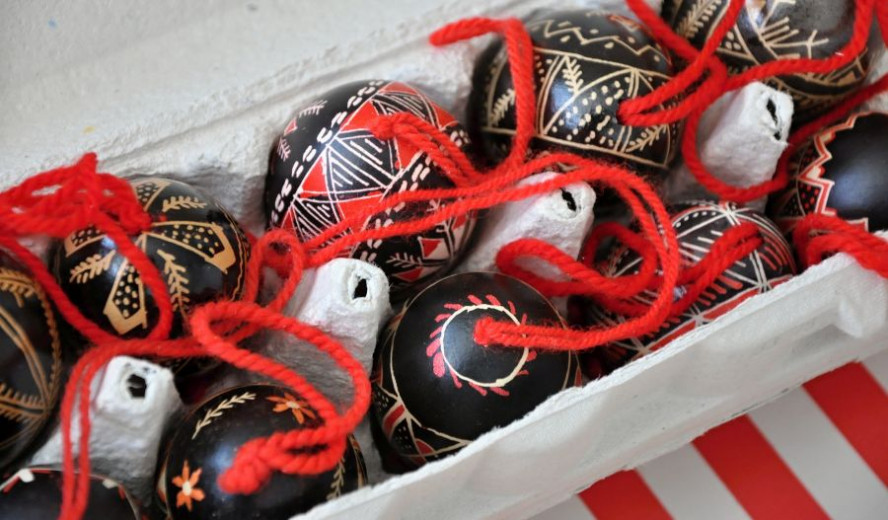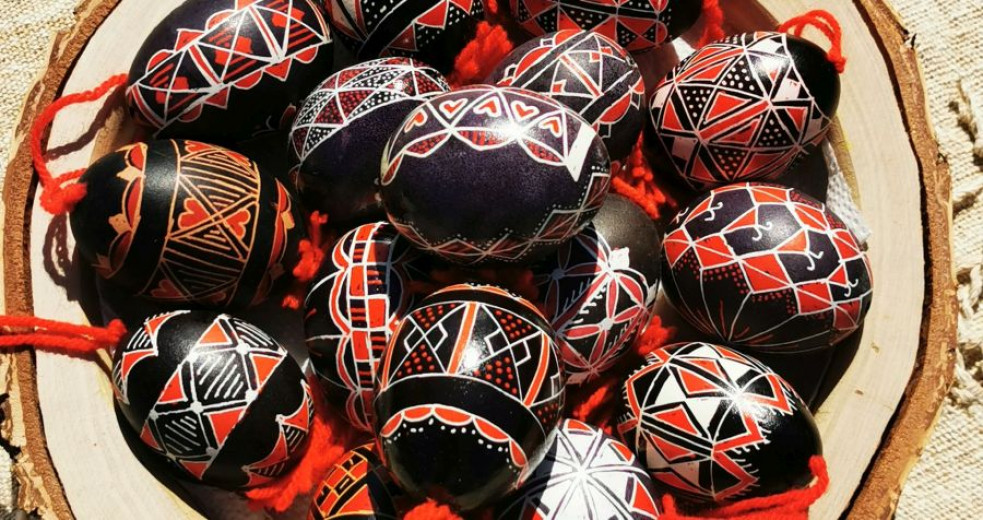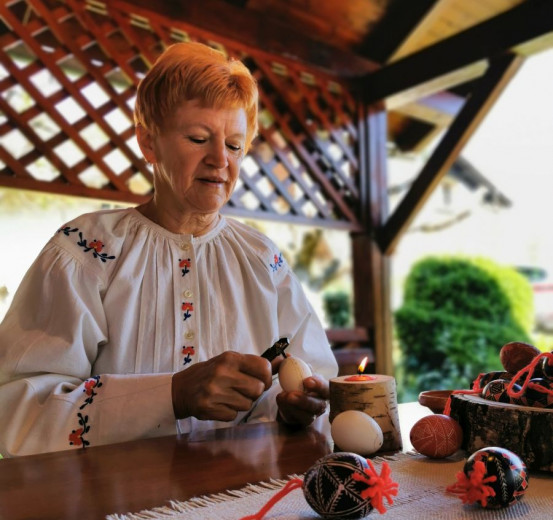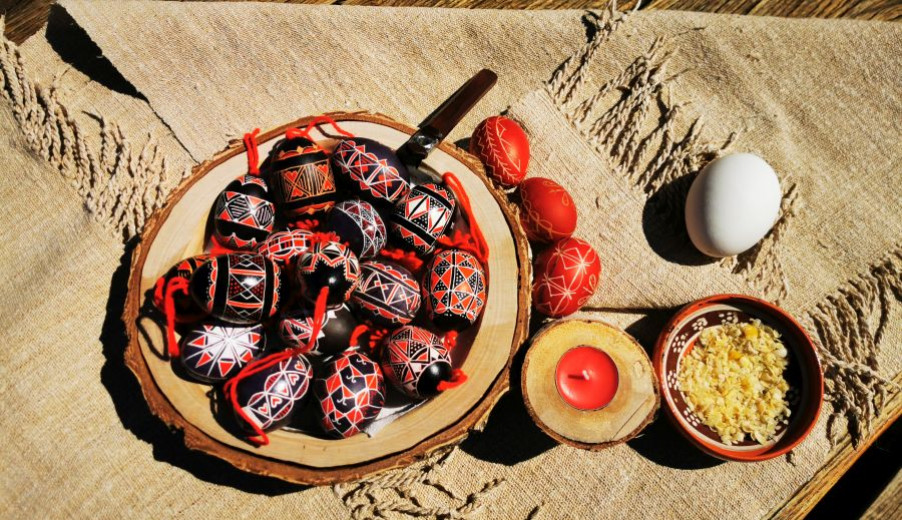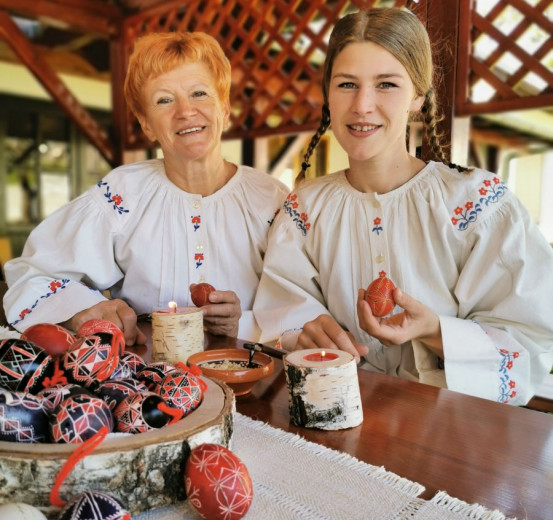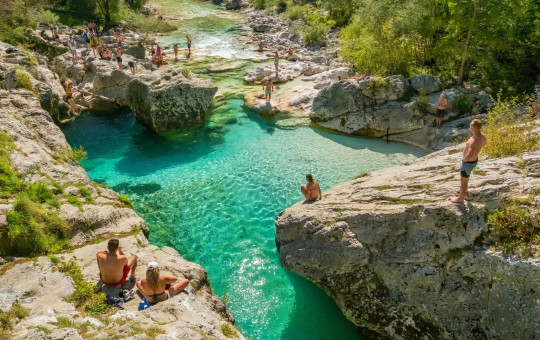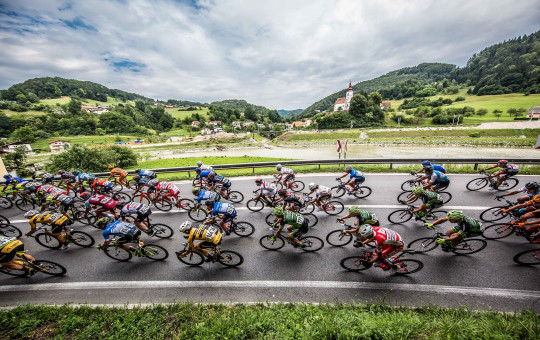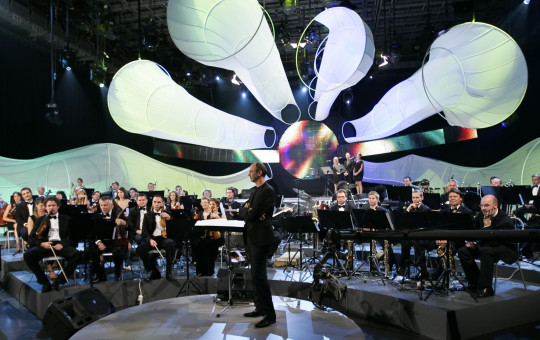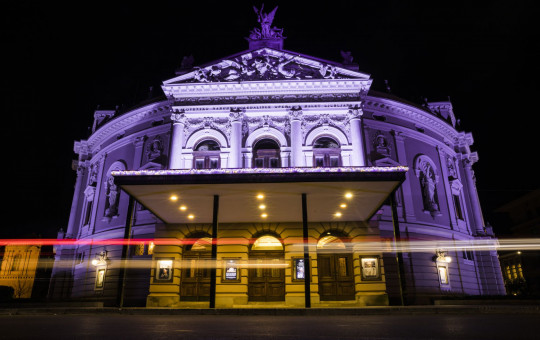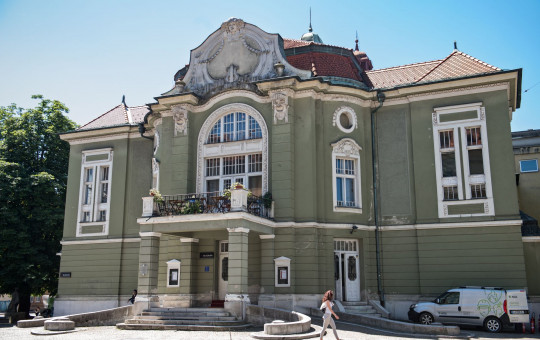Today, the Easter eggs from Bela krajina known as pisanice, painted using the batik method and decorated with typical ornamental designs, are only made in Adlešiči and its surrounding area. The locals who are trying to preserve the tradition of painting these Easter eggs also call them the pisanice of Adlešiči.
The tradition of creating authentic pisanice from Bela krajina is over a century old. In the past, pisanice were connected to Easter customs, but today, they are mainly a product of local crafts.
The first written record of pisanice dates back to 1832.
At the end of the 19th and at the beginning of the 20th century, less invasive pigments of plant origin were used for painting.
Horizontal and vertical lines were painted on the shell and the parts between them were filled with dots. Common motifs included herringbone (steljica), triangles, hearts, spirales, religious motifs, etc. Often, they were also inscribed with the words: Happy Hallelujah, Hallelujah, Happy Easter. Pisanice were painted by using the batik method, usually in one colour, sometimes in two.
A lot of credit for preserving the pisanice from Bela krajina goes to Božo Račič (from 1920 to 1925), a teacher who encouraged local women to paint and exhibit pisanice, which then became a souvenir for tourists.
After World War II, they began using crepe paper and stronger, industrial pigments to paint the eggs. Besides the geometric patterns, floral designs were now also popular. And besides religious inscriptions, there was a surge of secular themes: Keepsake, Greetings from Bela krajina, Greetings from Adlešiči, Happy Birthday, I love you and offer you this pisanica.
The making of pisanice from Bela krajina
Certain women helped preserve the tradition of making pisanice of Adlešiči, but with a modern twist.
Pisanice from Bela krajina are white, red and black, painted with crepe paper and black industrial fabric dye. The egg is usually blown out and, through the little hole, a wool thread is pulled through, with a tassel on one side and a loop on the other.
Nada Cvitkovič, head of Cvitkovič local crafts shop, learned to make pisanice many years ago from her mother-in-law, Marica Cvitkovič, a master of local crafts.
"To make pisanice, you need eggs (chicken, duck, goose) that are blown out as the souvenir. We also need a special writing tool ("pisalka"), beeswax, a candle, red crepe paper, black dye and a cooking pot. Beeswax in the "pisalka" is heated over a flame to become runny and it is used to paint on the egg, making a white pattern. The painted egg is submerged in red dye (crepe paper soaked in water). The dye does not stick to the waxed parts. When the pisanice are dyed red, you then continue with painting the patterns (now red). The next step is to cook the egg in black dye until it reaches the boiling point. The black dye also does not stick to the waxed parts. Carefully take the pisanice out of the pot, clean them, put oil on them and if they are blown out, decorate them with a red tassel," Mrs Cvitkovič describes the procedure of making pisanice from Bela krajina.
Preserving a valuable tradition
A master of making pisanice from Bela krajina, she teaches workshops for children as well as for seniors across Slovenia. "We often have children of Slovenian emigrants who decide to learn how to make pisanice, especially from the US, as well as families from abroad who stop for a few days in Bela krajina," says Mrs Cvitkovič and adds they also hold exhibitions of pisanice.
The transfer of knowledge to younger generations is also very important to her. At Miran Jarc Primary School in Črnomelj, there is an extracurricular activity where pupils learn how to make pisanice.
"They have already won many prizes at competitions, even international ones," says Mrs Cvitkovič proudly, who also transfers her knowledge to her children, especially her daughter Kristina.
In 2012, pisanice from Bela krajina were entered on the List of Intangible Cultural Heritage of Slovenia, and given the effort of the locals in Adlešiči to preserve the tradition of making pisanice, we are certain that the younger generation will also obtain this knowledge and pass it on to the future generations.
Date: 8. April 2020
Time to read: 3 min

